Goa Chitra Museum
The Goa Chitra is an ethnographic museum based in the former Portuguese colony (and now India's smallest state) of Goa. It has a large collection—over 4000 artefacts [1]—focusing on Goa's traditional agrarian technology and lifestyle.


Goa Chitra is based in the coastal Goan village of Benaulim. It was founded and is run (2010) by the artist-curator-restorer Victor-Hugo Gomes. TimeOut Mumbai has described the museum as "[o]ne of Goa's most charming attractions" and add that "this little rural complex houses thousands of traditional implements, vessels and tools that evolved over centuries in the agrarian heartland of Goa in the service of farming and other traditional trades".[2]
Collection
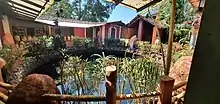
Goa Chitra's collection includes examples of local pottery, farming tools, musical instruments, ancient carts and palanquins[3]—from different points of the past. It also showcases an organic farm for the cultivation of various vegetables, herbs, spices, sugarcane, and rice—all staples of the area in coastal western India.
Eco-use
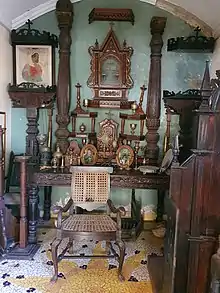
Fertiliser and pesticides utilised are made from farm waste, using traditional techniques. Rather ingeniously, human waste from the living quarters is also converted to bio-gas, and together with solar power, provides the energy needs of the farm.
Topmost contemporary museum
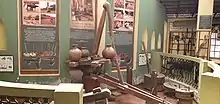
The Goa Chitra Museum has been rated by the Archaeological Survey of India as the "topmost contemporary museum" in India.[4]
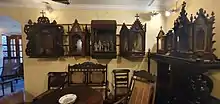
TIME, in a write-up, said: "The exhibits include hundreds of tillage implements, in testimony to a time when agriculture was Goa's mainstay. (Now, tourism and mining are the key industries and Goa depends on neighboring states for such staples as cereals and vegetables.) A sugarcane grinder standing almost five meters high is one of the main focal points of the museum. Gomes took over two years to restore it."[5]
Plans
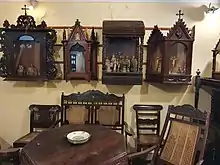
The museum plans to be a focal point for providing information to its visitors,; offer workshops for young children from schools and university students offer the opportunity to work with artisans; help artisans with craft development, to make contemporary products based on the inspiration of their traditions which are saleable and help them earn towards a dignified life; and build a documentation-dissemination plan to "guarantee the systematic collection of information about the operation of the project and provide the basis for sharing information with other similar projects."[6]
See also
References
- "A quick tour of Goa's heritage through 4,000 artefacts". Architectural Digest. 15 August 2018.
- 15 new things to look out for in Goa this season
- http://www.goachitra.com/collections.html
- A one-man mission, Goa Chitra Museum houses live specimen too
- Next Time You're in ... Goa
- Methods for Achieving Goals and Objectives
External links
| Wikimedia Commons has media related to Goa Chitra Museum. |
- Goa Chitra Museum
- Next Time You're in ... Goa
- Remembering Yesterday’s Goa via Benaulim
- Goa Chitra Celebrates International Museum Day
- M.K. Narayan's Tryst with Goa's Heritage
- Goa Chitra, museum of State’s rich past
- Goa Chitra launches first heritage trail
- Goa Chitra
- Remembering yesterday’s Goa… via Benaulim
- Goa Chitra: Ethnographical Museum
- Goa’s first and only ethnographic museum
Photo gallery
- Goa Chitra Museum
 Victor Hugo Gomes, Founder and Curator of the Goa Chitra Museum
Victor Hugo Gomes, Founder and Curator of the Goa Chitra Museum The Irrigation Well for the farm incorporated within the museum structure
The Irrigation Well for the farm incorporated within the museum structure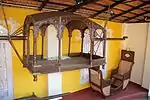 Ancient Mode of Transport
Ancient Mode of Transport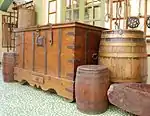 Storage Implements
Storage Implements Ploughing Implements
Ploughing Implements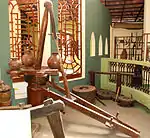 Coconut Oil Extractor and Dehusking Mills
Coconut Oil Extractor and Dehusking Mills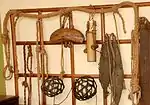 Draft Animal Utilities
Draft Animal Utilities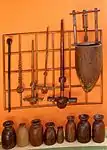 Butter Churning Implements
Butter Churning Implements